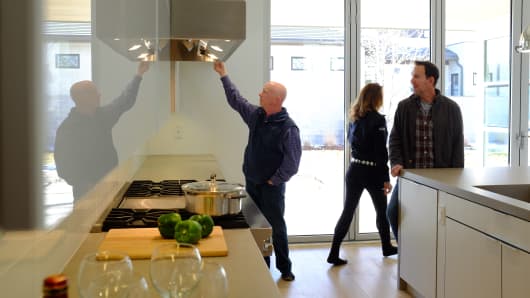At a Sunday open house on a sunny spring day outside Philadelphia, only about a half-dozen families showed up to tour a $600,000 colonial.
The home was in a sought-after suburb with excellent schools and had just gone on the market the previous Thursday. The showing was lean, likely because more than two dozen potential buyers had already seen it immediately, and there were two offers pending.
That scenario is playing out in neighborhoods across the nation, as buyer demand soars and the supply of homes for sale sits at a record low.
"The frustration with the lack of inventory is, so many of the houses are going in bidding wars, and so you know you really have to step up to the plate and you have to do your homework to be a competitive buyer," said Patrick Clark, the real estate agent with Long and Foster showing the home.
Buyers today not only need to be preapproved for a mortgage, but they must also have a mortgage commitment. Home prices are hitting new highs and the gains are growing, just as mortgage interest rates are turning higher again. All of that has more buyers stretching their budgets, putting less down or using adjustable rate loans, or ARMs, that offer lower rates.
They are actually feeling emboldened to do so, thanks to the rise in the stock market and the improving economy.
"When they're more confident they are willing to stretch a little further," said Mike Graff, a mortgage consultant with Prosperity Home Mortgage. "I think that some people realize, look, they're not going to be in this house for 30 years, so moving to an ARM, when the rate is fixed for a period of time, they're definitely more comfortable with something like that to lower their payment or to kind of stretch their budget a bit, so we have seen an uptick in that."
Borrowers also have more options for low down payment loans, options that were not available as recently as just a few years ago. Fannie Mae reintroduced a 3 percent down payment loan that it had discontinued during the recession, and some private lenders are venturing back into subprime, although they're calling them "nonprime" loans. These are mortgages to borrowers with lower credit scores.

